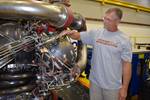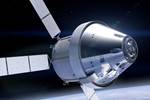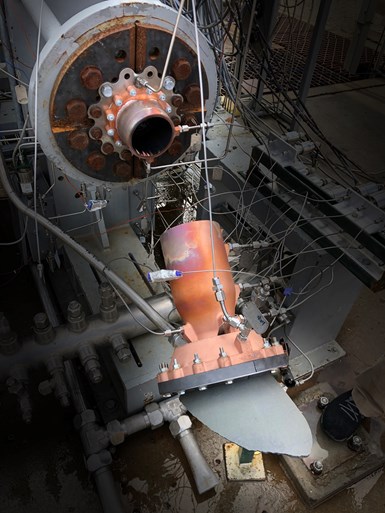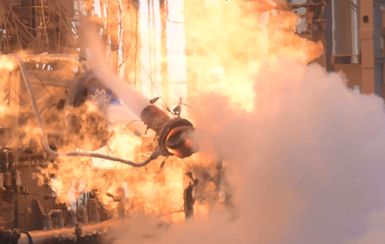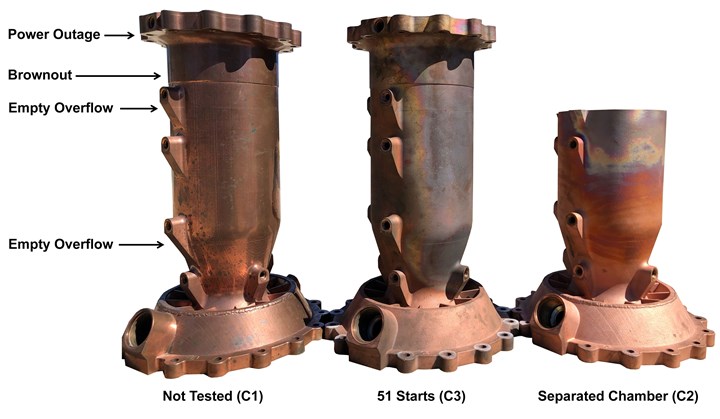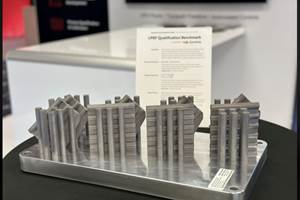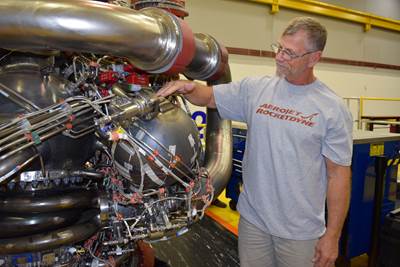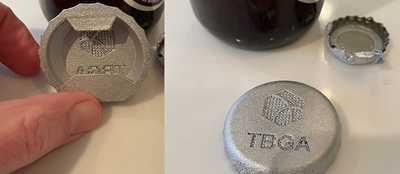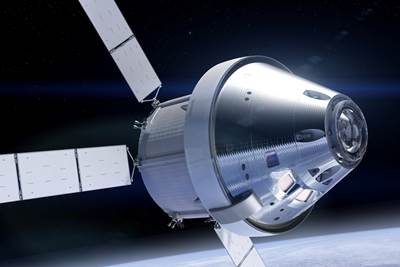In the first article in this series, “A Framework for Qualifying Additively Manufactured Parts,” Dr. Kevin Slattery and John E. Barnes defined and mapped the key steps for Qualification, Certification (Q&C), and Production. In the following series, members of the TBGA team partner with industry experts to discuss what is unique about AM and how that impacts Q&C for their industry. In this article, TBGA’s Laura Ely collaborated with NASA’s Alison Park and Paul Gradl to expose the opportunities and challenges AM presents for Q&C of space systems.
Close your eyes and conjure your most poignant image of space travel. Boomers likely see 1969’s “one small step for man, one giant leap for mankind” moonwalk, while Gen Xers might have a grade school flashback filled with heart-stopping visuals of the Challenger breaking into pieces 73 seconds into flight.
If we ask our current grade schoolers to conjure a space travel image, there is a decent chance their first vision is an AM-enabled space system. Is it the Mars Perseverance Rover and 3D printed parts that make up a heat exchanger? It might be NASA’s Commercial Crew Program routinely transporting astronauts to and from the International Space Station. It could be a fancy multimaterial printed rocket engine for a small satellite launch vehicle. Or might they see a near completely 3D printed Relativity Space Terran 1 rocket launching for the first time?
AM in space is not new, and increasingly complex AM-enabled systems are being launched every year. All these systems went through certification prior to flight. As was clearly articulated in the first article in this series, when it comes to qualification and certification, the process is the process… is the process, regardless of the manufacturing approach. It is not new. However, those images we conjured included successes and failures. So, that begs the question…
Is failure an option?
The ultimate test of a system’s risk criteria is to ask if failure is an option. At the most extreme end of the space industry certification spectrum proudly sits systems for human space flight. The certification authority has the grave weight of knowing lives are on the line; there is very little margin for error and a high consequence of catastrophic failure. When risk is high, the process of qualification and certification has a high burden of proof. The bottom line: Can we trust this system to perform without doubt? For human space flight, failure is, obviously, not an option. But we have seen quite a few notable failures of space systems in recent times, both on the ground and in the air, so failure must be an option in some cases. To understand the acceptance of risk, industries either officially or unofficially have part/system classifications.
Classification, Risk and Trust
Do all space systems require certification to the full rigor of human space flight? Absolutely not. It’s true across all industries, when the application risk is lower, achieving the trust hurdle is easier.
In the case of AM, similar to traditionally manufactured parts, the individual part requirements are also a key variable in the level of fidelity and pedigree required for final system certification. Naturally, a minimally loaded bracket with negligible consequence of failure will be much easier to certify than a rocket combustion chamber that is operating in extreme environments and loads, has a higher consequence of failure, and has inherent AM build and processing risks.
NASA’s Technical Standard 6030, released in 2021, as part of NASA’s Design and Construction Technical Standards portfolio, provides the policy framework for the development, production, and safe implementation of AM Space System hardware. The Part Classification system introduced in 6030 is supposed to establish a consistent methodology to define and communicate the risk associated with AM part designs. This classification makes sense because classifications determine appropriate levels of process control, qualification and inspection.
The 6030’s classification system has one goal: to enable a consistent evaluation of part risk through defined metrics for consequence of failure, structural demand, and AM-associated risks. This sets up nicely for one to communicate the story about the part to the appropriate Tech Authorities and Program Management to establish the trust in the system to perform. Risk assessment, both part and process, is an important step of this communication process.
Risk assessment includes not only risk to human lives, but another key factor — financial impacts. The typical launch costs X, a ground test fire for a rocket engine costs Y, so failure of a system certainly has significant cost ramifications in addition to the failure of the mission.
So, that begs the next question: Is AM special? Here enters the quintessential engineer’s refrain: Well… it depends!
What Is Unique About Additive Manufacturing for Q&C?
Speed and accessibility are two factors that make AM unique from other manufacturing processes.
- The Speed of AM. From its inception, AM has represented a way to make things fast. Rapid prototyping allowed the creation of complex shapes to allow a team to better understand the design and iterate upon it. As AM has progressed to the creation of engineered products, a dissonance is occurring. Engineered systems require rigorous certification; a process that is inherently slow and hard. How do we manage the opportunity of a rapid Design-Fail-Fix cycle (or Design-Analyze-Build-Test) cycle while also following an established qualification and certification process?
- The Accessibility of AM. 3D printing brings manufacturing to our schools, our basements and to a wide variety of manufacturing environments. It also means people who have previously not lived the tedium of certification of engineered products are able to print parts. Buying a printer is easy, but successfully manufacturing critical parts with pedigree and consistency is really hard. As Colin Powell stated, “there are no secrets to success. It is the result of preparation, hard work, and learning from failure.”
AM is also very process sensitive, meaning significant work is required to establish the repeatability and robustness required for qualification, thus driving increased scrutiny of build-to-build material quality, feedstock, inspections, machining, cleaning and a myriad of other processing steps. All this data requires review and confirmation (classical definition of process control). This rapidly evolving, and diverse, technology also lacks people with industrial experience and standards of performance.
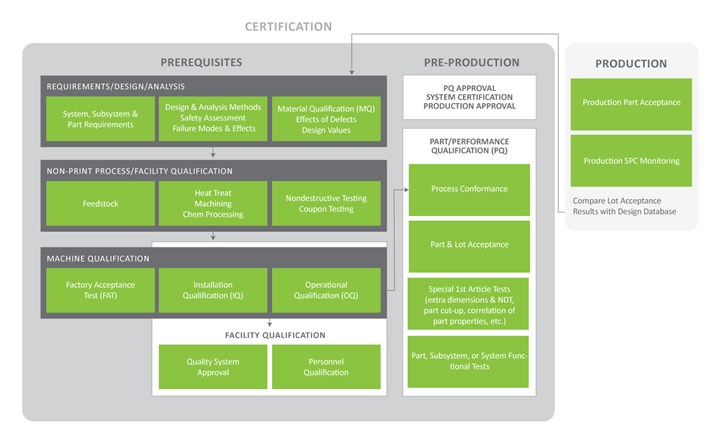
In the first article written by Dr. Kevin Slattery and John E. Barnes for this series, “A Framework for Qualifying Additively Manufactured Parts,” we defined the overall framework as seen in Figure 1 and mapped the key steps for Qualification, Certification (Q&C) and Production. Source: A Framework for Qualifying AM Parts
Q&C Key Questions
From a NASA perspective, the hard work of AM implementation is well represented by NASA’s Q&C pyramid and this series of questions:
- Is your process mature enough for production? Process maturity requires mature engineering and production practices as a prerequisite, and includes the use of a quality management system (QMS).
- Do you know how to define your process and how to control your process? Definition and control includes equipment, feedstock, fusion and thermal process, as well as material data, design value and statistical process control.
- Do you understand part production control requirements? These include part design, assessment and analysis, preproduction articles and AM production controls.
- Finally, do you know how to establish the equivalency holistically between blocks using interrelated and causal material characteristics?
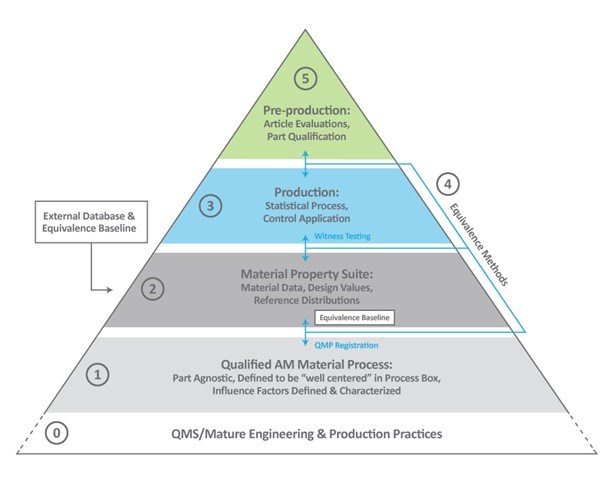
NASA’s building blocks for qualification of parts. Image Credit: NASA
Requirements, Requirements, Requirements – What Is Unique About Space Systems?
NASA is moving from low Earth orbit operations to a deep space exploration paradigm, and human exploration of space, especially deep space, requires extreme reliability. Additively manufactured parts are already being used for NASA programs in critical applications including transportation from Earth to destination; stations at destination; lander from station to surface; spacecraft for science missions; and sample return from Mars.
What is so unique about implementing AM hardware in space systems? The space environment is a study in extremes — temperature, pressure, loading, corrosion, material compatibility, etc. There is more to AM alloys than just bulk chemistry and tensile strength. This requires material performance understanding of strength, ductility, fatigue, heat resistance, cryogenic ductility, toughness, tearing resistance, fatigue crack growth, stress rupture, hydrogen embrittlement, oxidizer compatibility, flammability, intergranular cracking, general corrosion, stress corrosion cracking, etc.
Just like other traditionally made alloy systems, AM alloys are complex and require precise metallurgical control to meet engineering expectations against a variety of failure mechanisms. There are dozens if not hundreds of inputs into processing AM parts that must be well understood, in addition to the process, structure, property and performance relationship. Slight changes in parameters or feedstock could have huge implications into the microstructure and ultimately part performance. Do you really know how sensitive your process is?
An aspect often overlooked when considering the implementation of AM hardware in space systems is the need for seamless integration of AM parts into a complex system. Once again, this is not special for space; just like any other AM parts used in other sectors, an AM space part cannot function by itself unless its properly integrated into the system.
What helps the players in the space sector is many decades of experience; the fact that proper governing design and safety standards and requirements are clearly presented and appropriately cited in the programs. These “Rule Books” are essential to provide the necessary controls for the safe implementation of rapidly evolving technologies like AM. This ensures that everyone is on the same page for the expectations of deliverable products and performance standard.
An Example of Lessons Learned from a Rocket Chamber Failure
Qualification is often misunderstood as a late-stage aspect of the development process, occurring long after the thousands of hours of design, analysis and testing have been completed. We try to summarize the extensive work done at NASA into a few brief paragraphs in order to justify our qualification criteria: stating that we have tested X and are confident that we have addressed various observed failure modes. But what if we approached qualification and certification proactively earlier in the process and more systemically? What if we collected the right set of data along the way to allow for data-driven decisions?
Recently, NASA discussed a developmental AM rocket engine combustion chamber failure and lessons learned from this occurrence. While the project met initial goals to test an AM chamber in 51 starts, a second chamber built as part of the same AM build failed on the ninth start at the location of a witness line. So here’s a question: Should engineers put some scrutiny and test potential build interruption’s impacts on material quality as part of the developmental learning process, or do wait until an issue arises to reactively evaluate them?
Top: Long Life Additive Manufacturing Assembly (LLAMA) test for the LPBF chamber. Bottom: The moment of failure. Photo Credits: NASA
Upon investigation, it was determined that the separation of the chamber was due to high concentration of porosity in the areas where build interruption lines are formed. The cause of detrimental flaws seen in and around the build interruption line, which resulted in reduced mechanical properties in the local area, may have been caused by degradation of laser optics and other process escapes. This incident clearly demonstrates the sensitive nature of the overall AM process. Do we only rely on the “one-and-done” calibration of the AM machine to determine if it has drifted or consider what other process controls are in place? Or even better, do we become proactive in identifying and mitigating these potential process escapes by means of doing process failure mode and effects analysis (PFMEA) or similar exercises?
The failed chamber side by side with the earlier chamber tested 51 times, and an untested chamber. Photo Credit: NASA
By thoroughly examining build interruption lines observed during the process development phase, having a nice trail of feedstock information, performing relevant environment material characterization and mechanical testing, the team could have identified potential issues and areas of improvement in AM that will provide a good path for qualification. Importantly, had the process escape definition been completed earlier, which would include exercises such as mapping process parameter sensitivities to understand how potential drifts can affect microstructure and properties, the users would have learned more about the potential AM risks. These material evaluations and characterization can be done concurrently with the part design-fail-fix cycle while maturing the overall Technology Readiness Level (TRL).
We can obtain mechanical test coupons and microstructure verification samples with every development build establishing build to build variation or feedstock variations. These datasets serve as a basis for establishing criteria for decision making throughout the development process and providing a smooth path for qualification. By collecting the important and relevant process information early on, as the development matures, and learning from analyses and tests, we can improve the efficiency and effectiveness of the AM process, ensuring the successful qualification of parts and processes. It is crucial to address potential issues proactively and continuously refine our understanding of the process to ensure its reliability and safety of our crews. Like everything in AM, though, this requires early planning.
Pogo: Dampening Both Oscillations and Concerns About AM in Space
NASA has successes with AM hardware qualification in human spaceflight. The part is the Pogo Suppressor in the Space Launch System (SLS) RS-25 liquid propellent rocket engine. The Pogo has a crucial function to dampen propellant oscillations caused by the liquid oxygen flowing into the engine from the vehicle, which can ultimately cause unwanted stresses on the spacecraft. The collaborative team at NASA and Aerojet Rocketdyne began the effort to implement AM technologies to replace the complex heritage manufacturing configuration.
The program objectives were clear from the beginning; reduce the overall cost and schedule and minimize specialized processes, but still meet the target performance goals. The Pogo assembly was classified as a Class A2 per NASA-STD-6030 Classification Table, Figure 2.
Extensive laser powder bed fusion process development and material characterization was carried out to satisfy the AM process requirements. Simultaneously, component development was conducted in accordance with the Technology and Component Readiness Level Plan. The material and part qualification process encompassed several activities, such as assessing robust surface finishing techniques, conducting relevant material characterization under operational conditions, and proactively considering the implementation of various non-destructive evaluation (NDE) methods for detecting surface and volumetric flaws, as well as establishing effective part cleaning procedures. These efforts culminated in a successful AM Production Readiness Review. The final assembly was integrated into a full-scale hot-fire test engine and completed a successful test campaign with 20 starts and 9,056 seconds of accumulated hot-fire time.
The road to qualification and eventual flight certification was not an easy one. However, at the end of the day, we were able to put the appropriate story together of the prerequisite development, pre-production, and production framework which resulted in establishing the trust in the Pogo system to perform as intended.
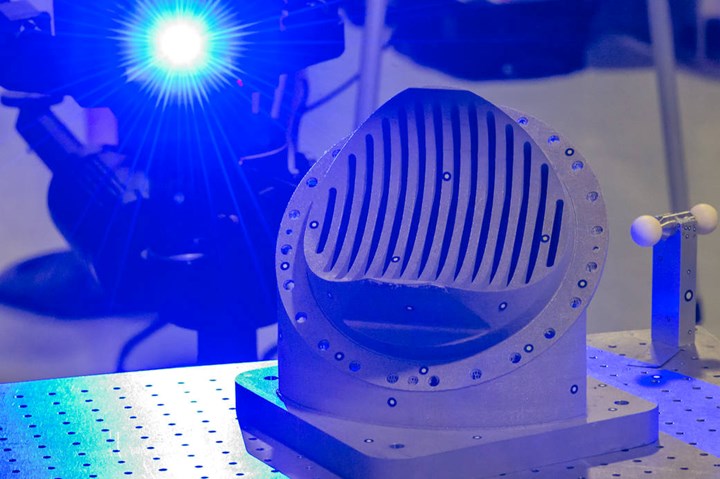
Figure 4: Inconel 718 L-PBF Pogo Z-Baffle. Photo Credit: NASA
Don’t Suffer in Silence
The aforementioned Pogo AM hardware was in the context of a formal NASA spaceflight program with clear set of requirements. However, NASA has a lot of capabilities to provide to the aerospace and AM communities, regardless of existence of formal NASA contracts or grants. NASA’s role in AM adoption can include technical excellence and expertise; new technology development; being the expert user; AM hardware qualification and flight rationale; and collaboration and consultation.
In other words, NASA believes in the concept of the phrase “A rising tide lifts all boats.” That is to say that when there is overall improvement or progress in the successful and robust implementation of AM hardware, everyone involved will benefit. This widespread benefit requires transparency and collaborations in sharing data and best practices across the industry. Effectively communicating the risks associated with AM parts and designs can be challenging, even when employing a well-established and consistent methodology for risk assessment. However, it is very doable if we do it in the right way at the right time, and provide these lessons learned across the industry.
Setting up the proper part classification system and defining the qualification framework is important. Following through on the agreed-upon plan is crucial. Communicating with the stakeholders and setting the expectation as early as possible are needed. Learning from mistakes early in the design-fail-fix cycle and characterizing microstructure, heat treatments and properties is necessary. This entails more than simply providing a set of requirements to prime contractors or suppliers; it necessitates collaboration across the entire supply chain and every aspect of the AM process. Achieving this level of collaboration requires complete transparency and the establishment of trust at every step.
Failures and Opportunities
AM is certainly changing the space industry and providing new opportunities to travel to low Earth orbit and explore our universe. New design opportunities not previously possible for new high-performance metal alloys, lightweighting, managing thermal, structural and dynamic loads are being enabled by AM.
As exciting as this sounds, it also holds a high level of risk, and failure is not an option. Methodical planning and technical execution are of paramount importance, but trust and transparency across every step of the AM process will enable successful missions. NASA has developed NASA-STD-6030 as a framework to provide consistency in assessing AM parts. It provides a starting point in setting up some ground rules for a challenging environment, while capitalizing on the decades of experience NASA has in putting things into space.
Along the path to a successful flight, there may be failures and opportunities to better refine both the part design and better understand the AM process. Just like AM, qualification and certification is iterative. As an industry, we get to learn from each success, as well as each failure! As we will see in the next installments in this series, every industry has unique aspects and experiences; however, the process is the same — the process is the process is the process!
About the Authors
Laura Ely
Laura Ely was recently named Managing Director of The Barnes Global Advisors, assuming the day-to-day responsibilities of the team, culture and brand. Prior to joining TBGA in 2018, Laura was Head of Technology at GKN Aerospace, where she developed the strategic skills required to affect technological change in large organizations. For 15 years, she has focused on improving metallic alloys and processes, specifically for laser/wire deposition, friction stir welding, spin forming, machining, and various wrought processes with application to titanium aerostructures, aluminum wing skins, inlet lip skins, and copper electrical connectors, coinage, and ammunition. She directly supported aerospace production, including Boeing’s 787-9, F/A-18, and F-15. Laura graduated summa cum laude with her B.S. in Metallurgical Engineering from the University of Missouri – Rolla (now Missouri S&T).
Paul Gradl
Paul Gradl is a principal engineer and subject matter expert at the NASA Marshall Space Flight Center (MSFC) in Huntsville, Alabama. Gradl serves as a Principal Investigator and leads several projects for additive manufacturing of liquid rocket engine engines, and has supported various development and flight programs over the last 19 years. He authored and co-authored over 100 journal articles and conference papers; published a book under AIAA, “Metal Additive Manufacturing for Propulsion Applications,” in 2022; holds five patents; and regularly teaches courses in additive manufacturing. Gradl is the recipient of numerous NASA and industry awards and medals; an Associate Fellow of the American Institute of Aeronautics and Astronautics (AIAA), a member of SME, and serves on several committees and an advisor to industry. Gradl was named one of “The Most Influential Personalities of Additive Manufacturing in 2020” by 3Dnatives and the recipient of “Engineer of the Year” by AIAA in 2022.
Alison Park
Alison Park is the deputy technical fellow of materials and additive manufacturing at NASA. She is a part of the NASA Engineering and Safety Center (NESC). Alison’s roles and responsibilities include working with NASA Tech Authority and Program offices to qualify and certify mission critical AM hardware and design and executing technical assessment and support projects for various NASA programs across the agency. Prior to her NASA assignment, she was the technical program manager at a leading rocket propulsion company responsible for capturing and managing R&D projects to mature AM technologies. She holds a B.S. in materials engineering from Purdue University and a M.S. in aerospace materials engineering from University of California, Los Angeles (UCLA).
Related Content
Dyndrite, MIMO Technik, Astro Collaborate on Machine, Material Qualification for 3D Metal Printing
The companies chose to collaborate on the development of the Mastro process in order to streamline and automate a closed-loop source for additive production and qualification.
Read MoreAdditive Manufacturing for Defense: Targeting Qualification
Targeting qualification in additive manufacturing for the defense industry means ensuring repeatability as well as reliability as there is much at stake, including human lives. Certain requirements therefore must be met by weapons systems used by the defense industry.
Read MoreAM Materials Consortium Selects Partners for LPBF Fabrication and Testing
The consortium is developing open LPBF parameter sets to streamline machine, material and process qualification, with the goal of expediting customers’ process development leading to serial production.
Read More7 Takeaways on 3D Printing As a Pathway to Polymer’s Future
The Cleveland section of SPE hosted “Additive Manufacturing: Printing the Path for the Future” on October 17, 2024. Speakers signaled where AM is and where it is headed with session topics ranging from pellet-based 3D printing to qualification and commercialization of additively manufactured products.
Read MoreRead Next
Space Launch System Accumulator is a Giant Leap for 3D Printing
A collaboration between Aerojet Rocketdyne and NASA is resulting in critical parts being 3D printed for new versions of the workhorse RS-25 engine.
Read MoreA Framework for Qualifying Additively Manufactured Parts
A framework developed by The Barnes Global Advisors illustrates considerations and steps for qualifying additively manufactured parts, using an example familiar to those in AM: the 3D printed bottle opener.
Read More6 Reasons Space Exploration Will Need Additive Manufacturing
There are at least half a dozen ways 3D printing will contribute to space travel, research and habitation — and in some cases it already is. Insights from seminar focused on manufacturing challenges for the space sector.
Read More

